Depression Anxiety Disorders
Blue indicates link
A scary reality about medications prescribed for mental disorders.
Research suggests that upwards of 16 million American adults (6.7% of the adult population) are afflicted with major depressive disorder (MDD), a neuropsychiatric condition characterized by overwhelming sadness, behavioral changes, sleep disturbances, and cognitive deficits. As of current, depression is the leading cause of disability in the United States among individuals between the ages of 15 and 44. Moreover, it is known that approximately 1 in 33 children and 1 in 8 adolescents exhibit clinical depression.
Although approximately 70% of individuals who receive antidepressant medication derive substantial therapeutic benefit, the remaining 30% are partial or non-responders. Partial or non-responders to antidepressant medication tend to have a poor quality of life, suicidal ideation, and long-term functional impairment. For this reason, there’s a major need to develop new antidepressants in 2018 to help the ~30% of individuals who don’t respond well to current-market medications.
Antidepressants increased the risk of suicidal thinking and behavior in children, adolescents, and young adults with major depressive disorder (MDD) and other psychiatric disorders in short-term studies. Short-term studies did not show an increase in the risk of suicidality with antidepressants compared with placebo in adults beyond age 24, and there was a reduction in risk with antidepressants compared with placebo in adults aged 65 or older. This risk must be balanced with the clinical need. Monitor patients closely for clinical worsening, suicidality, or unusual changes in behavior. Families and caregivers should be advised of the need for close observation and communication with the prescriber. Not approved for use in pediatric patients less than 12 years of age.
Did You Know?
- Anxiety disorders are the most common mental illness in the U.S., affecting 40 million adults in the United States age 18 and older, or 18.1% of the population every year.
- Anxiety disorders are highly treatable, yet only 36.9% of those suffering receive treatment.
- People with an anxiety disorder are three to five times more likely to go to the doctor and six times more likely to be hospitalized for psychiatric disorders than those who do not suffer from anxiety disorders.
- Anxiety disorders develop from a complex set of risk factors, including genetics, brain chemistry, personality, and life events.
Prevalence of Depression:
While anxiety disorders are the most common mental illness in the U.S., depression isn’t far behind. The most recent depression statistics include:
- As of 2017, 300 million people around the world have depression, according to the World Health Organization.
- According to data from the 2017 National Survey on Drug Use and Health, 17.3 million adults in the United States—equaling 7.1% of all adults in the country—have experienced a major depressive episode in the past year.
- 11 million U.S. adults experienced an episode that resulted in severe impairment in the past year.
- Nearly 50% of all people diagnosed with depression are also diagnosed with an anxiety disorder.
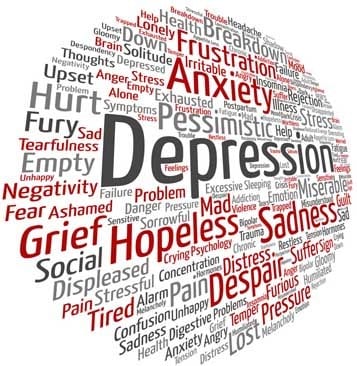
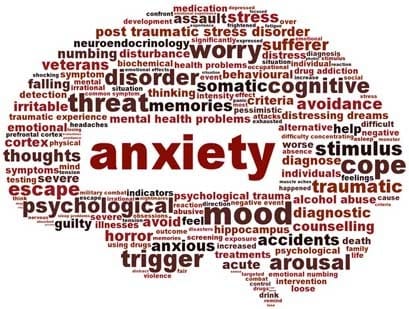
Most Common Antidepressants:
Below is a list of the most common antidepressants based on the specific class. For newer classes like the SSRIs and SNRIs, expect newer drugs that are less common to become more common in forthcoming years. Understand that not all antidepressants are listed below.
Types:
Most common SSRIs:
Selective Serotonin Reuptake Inhibitors were initially approved in the late 1980s with the introduction of Prozac. Nearly all SSRIs with the exception of Luvox have become extremely popular throughout the United States and the rest of the world.
They function by inhibiting the reuptake of the neurotransmitter serotonin. They are largely considered a first-line treatment for major depression and anxiety disorders and have become the most common antidepressants.
Prozac (Fluoxetine):
This is arguably the most popular antidepressant of all time in regard to branding and media attention. It is regarded by many as an embodiment of the entire SSRI class of drugs. It was the first SSRI introduced to the market in the 1980s and is still very commonly used.
Zoloft (Sertraline):
This SSRI was approved in 1991, just a couple of years after Prozac. It was marketed well and is still one of the most commonly prescribed SSRI medications. It is used for both depression and various types of anxiety.
Lexapro (Escitalopram):
This is an SSRI that was approved in the early 2000s to treat depression and generalized anxiety. It is touted as being an improved version of the drug Celexa, and many agree with these claims. It is one of the most common SSRIs of the past decade.
Celexa (Citalopram):
This drug was found effective for major depression and was approved in 1998. A few years after it had been on the market, a modified (arguably improved) version of the drug was created named “Lexapro.” Despite the widespread conversion of patients from Celexa to Lexapro, it still remains a commonly used antidepressant.
Paxil (Paroxetine):
This is an SSRI that was developed primarily for anxiety disorders and depression. In recent years it has become associated with some of the worst withdrawal symptoms, and side effects, and has been linked to birth defects. This drug is less frequently prescribed than when it was initially introduced, but it is still a commonly used SSRI for individuals with anxiety.
Most common SNRIs SNRIs:
Serotonin-norepinephrine reuptake Inhibitors were introduced to the United States in 1994 when the company Wyeth began marketing Effexor. This drug worked slightly differently from SSRIs because it also affected the neurotransmitter norepinephrine.
There is some evidence that low norepinephrine causes depression (in addition to serotonin), so companies created drugs that act on both neurotransmitters. These days Effexor is still common, but Cymbalta has overtaken it in regard to popularity due to its approval to treat a variety of conditions in addition to depression.
Cymbalta (Duloxetine):
This has become the most prescribed (2013-2014), top-selling (2013-2014), and the most popular antidepressant in 2014. In part, this is due to the fact that it’s approved to treat an array of conditions other than depression such as fibromyalgia, neuropathic pain, and chronic pain. It will remain the most common SNRI as it continues to dominate the market.
Pristiq (Desvenlafaxine):
This medication is essentially an improved version of Effexor by manufacturers. In recent years it has become significantly more common than Effexor due to heavy marketing and attempts by the manufacturers to convince doctors that this drug is superior to Effexor. Expect this drug to become commonly used in the upcoming years.
Effexor (Venlafaxine):
Of all the time, this is the most common SNRI medication. It is the oldest and has been around since the mid-1990s. It is medically approved for the treatment of depression and anxiety disorders. It was prescribed heavily until recent years when a questionably “improved” version of the drug was created (Pristiq).
Fetzima (Levomilnacipran):
This is the newest SNRI that works differently than other SNRIs on the market because it affects norepinephrine to a greater extent than serotonin. Although it is not yet a common antidepressant, it is projected to be a household name in the next few years. It is closely related to the older drug Milnacipran, which never got approval in the United States.
Most common atypical antidepressants:
This class of antidepressants is unique in that none of the drugs have similar mechanisms of action to other classes of drugs. All drugs in the “atypical” class have unique properties and are usually considered when a more common SSRI or SNRI is ineffective. The most common atypical antidepressant options include Viibryd, Wellbutrin, Trazodone, and Remeron. Brintellix is a newer antidepressant that many suspect will become commonly used in the future.
Wellbutrin (Bupropion):
This is perhaps the most common atypical antidepressant prescribed throughout history. Although Viibryd may currently be more popular, this one is more common. It works significantly different from all other antidepressants in that it affects norepinephrine and dopamine without affecting serotonin. In addition to being a common antidepressant, it is also a common smoking cessation aid.
Viibryd (Vilazodone):
This drug is similar to SSRIs, except it also affects the 5-HT1A receptor as a partial agonist. Although it is a newer drug, it is quickly becoming a common name in the antidepressant industry.
Remeron (Mirtazapine):
This is an atypical antidepressant that is commonly used when a person doesn’t respond to other medications. It is considered among the most potent antidepressants on the market and functions as a NaSSA (Noradrenergic and Specific Serotonin Antidepressant).
Trazodone (Oleptro):
This drug was formerly sold under the brand “Desyrel” and is a common atypical antidepressant. It is significantly less common than Viibryd and Wellbutrin but has unique properties as a SARI (Serotonin Antagonist and Reuptake Inhibitor). It is now sold as an extended-release drug in the form of Oleptro.
Brintellix (Vortioxetine):
This is a very new atypical antidepressant that was approved by the FDA for treating major depression in 2013. It works as an SMS (Serotonin Modulator and Stimulator), making it relatively unique. Despite being newer, it will become more commonly prescribed in upcoming years.
Most common tricyclic antidepressants.
This class of antidepressants is considered one of the oldest. These drugs are noted for their three-ring atomic structure. Many of the tricyclics are less common these days simply because SSRIs are considered safer with better tolerability. This class of drugs acts on serotonin and norepinephrine to elicit an antidepressant response.
Amitriptyline (Elavil):
This is a very commonly used tricyclic antidepressant and one of the most utilized throughout history. It was introduced to markets in 1961 and was heavily prescribed until the introduction of newer SSRIs.
Nortriptyline (Pamelor):
This is another common TCA drug that is closely related to the more commonly prescribed Amitriptyline. It is used for major depression as well as some types of pain, and to prevent childhood bedwetting.
Doxepin (Sinequan):
This is a common TCA drug that comes in both pill form and as a skin cream. It is used to treat depression as well as various skin conditions such as hives. Although it is less common for SSRIs, it is a common tricyclic antidepressant option.
Desipramine (Norpramin):
At one point this was another very common TCA medication. These days people have discovered the fact that it could have genotoxic effects and is associated with an increased risk of breast cancer.
Most common MAOIs:
Monoamine Oxidase Inhibitors are the oldest class of antidepressants. They function by increasing levels of various neurotransmitters in the brain. Older hydrazine-based MAOIs have been withdrawn from the market.
This entire class of drugs is often deemed outdated and is seldom used. In the event that a person has tried SSRIs, SNRIs, atypicals, tricyclics, and various antidepressant augmentation strategies, MAOIs may be tested. Below are the most commonly used MAOI drugs on the market.
Nardil (Phenelzine):
This is an MAOI that is still commonly used when an individual fails to respond to first and second-line treatment options for depression. Due to the fact that MAOIs can interact with food containing tyramine, they are less common. However, of drugs in the MAOI class, this is one of the more common medications prescribed.
Parnate (Tranylcypromine):
This is an MAOI that is effective for treating major depression and anxiety disorders. It is non-selective and irreversible and, therefore is likely to have an interaction with food containing tyramine. It is one of the only MAOIs still utilized today.
Emsam patch (Selegiline):
This is an older MAOI antidepressant that was redeveloped as a transdermal (skin) patch. In patch form, it is called “Emsam” and is used for major depression and Parkinson’s disease.
Moclobemide (Aurorix / Manerix):
This is an MAOI with reversible properties and is commonly used in countries outside of the United States including Australia and the United Kingdom. It has been found effective in treating both depression and social anxiety. It is a commonly used antidepressant in developing countries due to the fact that it has minimal side effects.
We will be looking more into these drugs as far as risks and side effects.
What is Anxiety?

Anxiety is an emotion characterized by feelings of tension and worried thoughts and accompanied by physical symptoms such as sweating, trembling voice changes, or increased blood pressure. It may also be called nervousness.
Occasional anxiety concerning a stressful or uncomfortable event is normal. However, if a person feels disproportionate levels of anxiety or it is present almost continuously, it might be diagnosed as an anxiety disorder.
What Causes Anxiety?
Anxiety is part of our survival response and is the way our body responds to potentially harmful or worrying triggers.
Strong emotions or fear cause a surge of epinephrine (also called adrenaline) from our adrenal glands. This increases our heartbeat, increases our sensitivity to our surroundings, and prepares us for physical confrontation or to flee if we perceive any threats to our safety. This is often called the fight or flight response.
Anxieties today mostly revolve around family, friends, health, money, or work. People more at risk of anxiety disorders include those:
With relationship problems
Whose jobs involve long hours, high workloads, little support, or danger
With family members with anxiety disorders
With medical conditions that result in significant lifestyle adjustments, pain, or restricted movement
Who has experienced stressful or traumatic events?
Withdrawing from alcohol, opioids, or other substances.
What are the Symptoms of an Anxiety Disorder?
Symptoms of an anxiety disorder are usually out of proportion to the original trigger or stressor.
If these are accompanied by significant physical symptoms such as increased sweating or increased blood pressure then a person is more likely to have an anxiety disorder rather than stimulus-appropriate anxiety.
Generalized anxiety disorder (GAD) is a chronic, ongoing condition with excessive worry over normal life events, whether minor or major. These feelings are usually out of proportion to the trouble that you may encounter in your everyday life.
With GAD, feelings come on gradually and are present each day, not in one individual attack, and last for months, even years. Worry may be so excessive that it interferes with your daily life. GAD may also be accompanied by depression and substance abuse disorders.
Symptoms of GAD include:
Excessive and uncontrollable worry
Increased irritability
Difficulty concentrating
Restlessness or a feeling of being on edge
Rapid breathing
Excessive perspiration and sweating
Trembling, quivering
Fatigue
Trouble concentrating
Headaches, stomach upset
Avoidance of circumstances that might trigger severe anxiety
Sleep difficulties.
Other anxiety disorders include panic disorder, phobias, selective mutism, social anxiety disorder, and separation anxiety disorder.
How is Anxiety or an Anxiety Disorder Treated?
Treatment depends on the severity and type of anxiety disorder and if it is interfering with everyday life.
Treatments may include:
Stress management
Relaxation techniques
Mental imagery (replacing negative thoughts with positive ones)
Cognitive Behavioral therapy
Counseling
Support
Exercise
Medications.
The following list of medications is in some way related to or used in the treatment of this condition.
Xanax
Clonazepam
Alprazolam (same as Xanax) 
Lorazepam
Ativan
Lexapro
Buspirone
BuSpar
Hydroxyzine
Valium
Diazepam
Cymbalta
Gabapentin
Vistaril
Effexor
Paxil
Propranolol (Personal experience. I had a major blood pressure drop when taking this medication. Be aware)
Trazodone
Bupropion
Clonidine
Paroxetine
Duloxetine
Mirtazapine
Tenormin
Tramadol (Tramadol is a narcotic-like pain reliever.)
Seroquel
Alprazolam 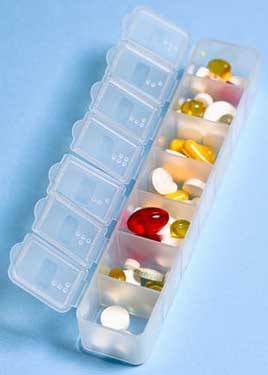
Librium
Lorazepam
Risperidone
Clorazepate
Diazepam
Doxepin
Paxil
Amitriptyline/perphenazine
Chlordiazepoxide
Oxcarbazepine
Pexeva
Phenytoin
Sinequan
Valspar
Wow, that’s a lot of different drugs. Are some of them experimental? How much money does “Big Pharma” make?
Anxiety and Stress (13 drugs)
Avoidant Personality Disorder (0 drugs)
Generalized Anxiety Disorder (15 drugs)
Panic Disorder (36 drugs in 2 topics)
Performance Anxiety (2 drugs)
Post Traumatic Stress Disorder (16 drugs)
Social Anxiety Disorder (12 drugs)
Alternative treatments for Anxiety:
Links a click away below:
The following products are considered to be alternative treatments or natural remedies for Anxiety. Their efficacy may not have been scientifically tested to the same degree as the drugs listed in the table above. However, there may be historical, cultural, or anecdotal evidence linking their use to the treatment of Anxiety.
5-hydroxytryptophan
Gotu Kola
Kava
Lavender
L-tryptophan
Valerian
Below are Amazon shopping links. Prices, assortment, and the convenience of delivery.
Herbal Remedies Catalog and prices
More on Antidepressants:
The following ranking identifies the three most-prescribed antidepressant medications for 2013-2014, which all earned places on IMS Health’s top 100, and seven others that didn’t make that list but appeared likely to be among the top 10 antidepressants.
1. Cymbalta was the most commonly prescribed antidepressant during the time period involved with nearly 10.07 million prescriptions monthly, according to Mental Health Daily. Cymbalta was approved by the FDA in 2004.
2. Pristiq
3. Viibryd
4. Celexa
5. Zoloft
6. Prozac
7. Desyrel
8. Lexapro
9. Paxil
10. Effexor
Selective Serotonin Reuptake Inhibitors (SSRIs)
Prozac belongs to a class of antidepressants called selective serotonin reuptake inhibitors (SSRIs). Serotonin is a neurotransmitter that’s present in the gut and in the brain. Neurotransmitters are chemicals that help send messages from the end of nerve fibers to other nerves, or to muscles or other structures.
One study looking at individuals treated with antidepressants in the United States between 1996 and 2005 found that nearly 67% of respondents were treated with SSRIs.
In the brain, low levels of serotonin have been associated with depression and anxiety as well as panic disorders and obsessive-compulsive behavior. Low levels of serotonin in the gut have been associated with irritable bowel syndrome (IBS), osteoporosis, and even cardiovascular disease.4 SSRIs do exactly what the name describes: They prevent the reuptake (movement back into the nerve endings) of serotonin, making more of the chemical available. In other words, SSRIs relieve depression by boosting low levels of serotonin in the brain.
The Most Popular SSRIs
Before SSRIs, there were two main classes of antidepressants: monoamine oxidase inhibitors (MAOIs) and tricyclics (TCAs). Both of these types of medications had more potential side effects from SSRIs and were more dangerous if someone accidentally took too much, so it’s easy to see why there’s been an increase in the types of SSRIs to choose from.5
Some of the most commonly prescribed SSRIs include:
Prozac (fluoxetine):
Prozac is still one of the most popular SSRIs in the United States. It’s one of the only ones that the FDA has approved for children and teenagers to use. The 2017 antidepressant use study found that a little over 11% of respondents reported taking Prozac for depression.
Celexa (citalopram):
Studies show that Celexa works as well as other SSRIs and has similar side effects. One important thing to know about this antidepressant is that taking high doses of it has been associated with a rare heart rhythm problem.6 An estimated 14% of respondents reported that they were taking this medication.
Zoloft (sertraline):
Zoloft is highly effective, although some people find it’s more likely than other SSRIs to cause diarrhea. Zoloft is the most commonly prescribed antidepressant; nearly 17% of those surveyed in the 2017 antidepressant use study reported that they had taken this medication.
Paxil (paroxetine):
You might be more likely to have sexual side effects if you choose Paxil over other antidepressants. It’s also linked to a higher risk of sweating. While paroxetine did not make the list of the 10 most commonly prescribed psychiatric drugs, it remains a popular choice for some people.
Lexapro (escitalopram):
Along with Prozac, Lexapro is one of the only SSRIs that’s been approved by the FDA for teenagers to use. Around 8% of those surveyed reported that they had taken Lexapro.
Most SSRIs are very similar in regard to how well they work, although there may be subtle differences that can make one a better choice for you than another. It takes a while for all SSRIs to build up in the body enough to have an effect on symptoms, however, so it can several weeks or even months of trial-and-error to find the particular drug and dosage that will do you the best.
The side effects of various SSRIs can vary a bit as well, but in general, you may experience any of a few common and relatively minor temporary ones, such as nausea, diarrhea, headaches, dizziness, dry mouth, sweating, and trembling. As for more annoying and potentially dangerous side effects, some people gain weight after they start taking an antidepressant, although sometimes it’s not the drug itself but rather improved appetite and a renewed appreciation for eating that leads to the gain.
Other people find taking an antidepressant puts a damper on their sex lives. Men might have trouble getting an erection, for example, and women may have a hard time reaching orgasm, so that can be an important consideration if you’re in an intimate relationship.
People taking an SSRI may find the drug causes them to feel panicky and nervous; some may have thoughts of hurting themselves or even committing suicide. Adolescents are especially at risk for this and should be monitored very closely.
If and when you and your doctor decide to stop your medication, it’s important to wean off most antidepressants slowly. If you suddenly stop taking one you can have withdrawal symptoms, such as mood swings, dizziness, flu-like symptoms, and headaches.
Other common antidepressants belong to a class of drugs called serotonin and norepinephrine reuptake inhibitors (SNRIs). These inhibit the reuptake of two neurotransmitters: serotonin and norepinephrine.
The SNRIs that are available are:
Strattera (atomoxetine)
Pristiq (desvenlafaxine)
Cymbalta (duloxetine)
Fetzima (levomilnacipran)
Savella (milnacipran)
Ultram (tramadol)
Effexor (venlafaxine)
One of the most commonly prescribed SNRIs is Effexor (venlafaxine), which is as effective as other antidepressants in treating depression, but does have a higher rate of causing nausea and vomiting, and may increase blood pressure and heart rate.
The SNRI Cymbalta (duloxetine) also can increase blood pressure, but the bigger concern with this drug is that in some people it can lead to liver failure, so if you have any sort of liver disease it could be a dangerous choice for you. The same is true if you drink a lot of alcohol.
In the 2017 study on psychiatric drugs, Cymbalta was the most commonly prescribed SNRI drug, with 7% of respondents reporting that they had taken this type of medication.
Tricyclic Antidepressants (TCAs)
Tricyclics were among the first antidepressants. While they have been largely replaced by SSRIs, SNRIs, and other antidepressants, TCAs can still be a good option in cases where people have not responded to other types of antidepressants.
Types of tricyclics that are available include:
Elavil (amitriptyline)
Asendin (amoxapine)
Norpramin (desipramine)
Silenor (doxepin)
Tofranil (imipramine)
Pamelor (nortriptyline)
Vivactil (protriptyline)
Surmontil (trimipramine)
Tricyclics work by blocking the absorption of serotonin and norepinephrine. By preventing the reuptake of those neurotransmitters, it increases serotonin and norepinephrine levels in the brain, which can help to improve mood and relieve depression.
No type of TCA medication made the top 10 list of the most commonly prescribed psychiatric drugs. How do they find out? Experiment on you.
Atypical antidepressants do not fit into the other antidepressant categories and include:
Wellbutrin (bupropion)
Desyrel (trazodone)
Trintellix (vortioxetine)
Remeron (mirtazapine)
Of the atypical antidepressants, Wellbutrin is one of the most commonly prescribed. It works by acting on the neurotransmitter dopamine. An estimated 24 million prescriptions for bupropion were given in the year 2017. It has a lower risk of sexual side effects. In fact, some doctors prescribe Wellbutrin along with another SSRI to help counter low libido.
Monoamine Oxidase Inhibitors (MAOIs)
Monoamine oxidase inhibitors (MAOIs) were the first type of medication developed to treat depression. While they have been largely replaced by newer antidepressants that are safer and have fewer side effects, MAOIs are still prescribed and can be a good option for some people.
Some of the most commonly prescribed MAOIs include:
Marplan (isocarboxazid)
Nardil (phenelzine)
Parnate (tranylcypromine)
Emsam (selegiline)
MAOIs work by inhibiting monoamine oxidase, an enzyme that breaks down serotonin, dopamine, and norepinephrine, which are all neurotransmitters that control mood. This results in higher levels of these chemicals in the brain which helps improve mood and reduce anxiety.
A study of antidepressant usage found that almost 38% of respondents had been prescribed new medications other than SSRIs and tricyclic antidepressants (TCAs). Just over 11% had been prescribed tricyclics.
Personal Note:
I suffer from depression and an anxiety disorder. Many of the drugs listed above have been prescribed for me, and I have taken them accordingly. Some of them caused me to have severe side effects. Please always do your own research on what you are taking.
Always follow your Doctor’s advice
I am going to research some of the side effects these drugs may have in store for you. This will be time-consuming, but I do feel it is important. Please bear with me.
Xanax
Xanax (alprazolam) is a benzodiazepine (ben-Zoe-dye-AZE-eh-peen). Alprazolam affects chemicals in the brain that may be unbalanced in people with anxiety.
Xanax is used to treat anxiety disorders, panic disorders, and anxiety caused by depression.
Do not use Xanax if you are pregnant. This medicine can cause birth defects or life-threatening withdrawal symptoms in a newborn.
Alprazolam may be habit-forming. Misuse of habit-forming medicine can cause addiction, overdose, or death.
Common side effects of Xanax include ataxia, cognitive dysfunction, constipation, difficulty in micturition, drowsiness, dysarthria, fatigue, memory impairment, skin rash, weight gain, weight loss, anxiety, blurred vision, diarrhea, insomnia, decreased libido, increased appetite, and decreased appetite. Other side effects include hypotension, sexual disorder, muscle twitching, and increased libido. See below for a comprehensive list of adverse effects.
Check with your doctor immediately if any of the following side effects occur while taking alprazolam:
More common:
Being forgetful
clumsiness or unsteadiness
difficulty with coordination 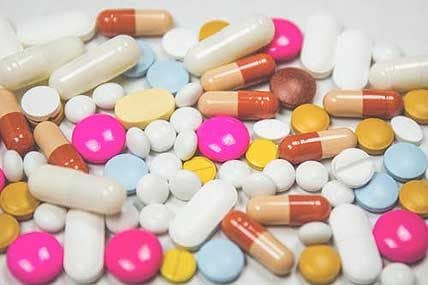
discouragement
drowsiness
feeling sad or empty
irritability
lack of appetite
loss of interest or pleasure
relaxed and calm
shakiness and unsteady walk
sleepiness or unusual drowsiness
slurred speech
tiredness
trouble concentrating
trouble performing routine tasks
trouble sleeping
trouble speaking
unsteadiness, trembling, or other problems with muscle control or coordination
unusual tiredness or weakness
Less common:
Abdominal or stomach pain
blurred vision
body aches or pain
burning, crawling, itching, numbness, prickling, “pins and needles, or tingling feelings
changes in behavior
Please destroy or turn in your unused medications to your Pharmacy
clay-colored stools
confusion about identity, place, and time 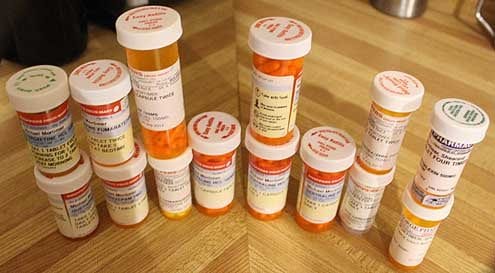
dark urine
the decrease in the frequency of urination
a decrease in urine volume
diarrhea
difficulty in passing urine (dribbling)
difficulty with concentration
dry mouth
fear or nervousness The medications I used to be on for depression and anxiety.
hyperventilation
inability to sit still
increased blinking or spasms of the eyelid
irregular heartbeats
itching or rash
joint pain
loss of bladder control
loss of coordination
loss of memory
muscle pain or stiffness
nausea
painful urination
problems with memory
restlessness
seizures
tightness in the chest
trouble with balance
twitching, twisting, or uncontrolled repetitive movements of the tongue, lips, face, arms, or legs
unusual drowsiness, dullness, tiredness, weakness, or feeling of sluggishness
vomiting of blood
thoughts of killing oneself
More common:
Absent, missed, or irregular menstrual periods
decreased appetite
decreased interest in sexual intercourse
decreased sexual performance or desire abnormal ejaculation
difficulty having a bowel movement (stool)
inability to have or keep an erection
increased appetite
increased weight
loss in sexual ability, desire, drive, or performance
stopping of menstrual bleeding
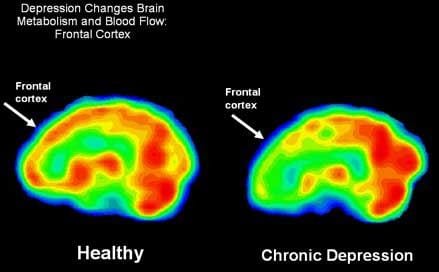
Personal Note:
No, I did not make this up. I was on this drug for over six years. All I had to do was tell my psychiatrist, I didn’t think it was working and I had no problem getting the dosage increased. It took me close to a period of three months (may differ) including hospitalization to wean me off this medication and eventually stop.
Clonazepam Side Effects:
Commonly reported side effects of clonazepam to include:
Drowsiness, upper respiratory tract infection, ataxia, depression, and dizziness.
See below for a comprehensive list of adverse effects.
More common
- Body aches or pain
- chills
- difficulty breathing
- discouragement
- dizziness
- feeling sad or empty
- irritability
- lack of appetite
- loss of interest or pleasure
- poor coordination
- runny nose
- shakiness and unsteady walk
- sleepiness or unusual drowsiness
- sneezing
- tiredness
- trouble concentrating
- trouble sleeping
- unsteadiness, trembling, or other problems with muscle control or coordination
- unusual tiredness or weakness
https://youtu.be/gHbpDpeDQUs
Personal Note:
My Doctor switched to this drug and I am currently trying to wean myself off it.
Lorazepam Side Effects:
More common
- Drowsiness
- relaxed and calm
- sleepiness
Incidence not known (somebody knows or why else list them)
- Abdominal or stomach pain
- aggressive, angry
- the attack, assault, or force
- black, tarry stools
- bleeding gums
- blood in the urine or stools
- blurred vision
- confusion about identity, place, and time
- convulsions
- dark urine
- decreased urine output
- dizziness, faintness, or lightheadedness when getting up suddenly from a lying or sitting position
- fast or irregular heartbeat
- feeling sad or empty
- a general feeling of tiredness or weakness
- irritability
- loss of appetite
- loss of balance control
- loss of memory
- lower back or side pain
- muscle trembling, jerking, or stiffness
- nausea or vomiting
- painful or difficult urination
- problems with memory
- puffiness or swelling of the eyelids or around the eyes, face, lips, or tongue
- restlessness
- seizures
- swelling of the face, ankles, or hands
- thoughts or attempts at killing oneself
- tightness in the chest
- trouble concentrating
- trouble sleeping
- uncontrolled movements, especially of the face, neck, and back
- unusual tiredness or weakness
- vomiting of blood
Ativan Side Effects (same as Lorazepam)
Lexapro Side Effects:
Common side effects of Lexapro include diarrhea, drowsiness, ejaculatory disorder, headache, insomnia, nausea, and delayed ejaculation. Other side effects include anorgasmia, constipation, dizziness, dyspepsia, fatigue, decreased libido, diaphoresis, and xerostomia.
Along with its needed effects, escitalopram (the active ingredient contained in Lexapro) may cause some unwanted effects. Although not all of these side effects may occur, if they do occur they may need medical attention.
Check with your doctor immediately if any of the following side effects occur while taking escitalopram:
Rare (But they happen or else they would not be listed)
- Coma
- confusion
- convulsions
- decreased urine output
- dizziness
- fast or irregular heartbeat
- headache
- increased thirst
- muscle pain or cramps
- nausea or vomiting
- shortness of breath
- swelling of the face, ankles, or hands
- unusual tiredness or weakness
Some side effects of escitalopram may occur that usually do not need medical attention. These side effects may go away during treatment as your body adjusts to the medicine. Also, your health care professional may be able to tell you about ways to prevent or reduce some of these side effects. Check with your health care professional if any of the following side effects continue or are bothersome or if you have any questions about them:
More common:
- Constipation
- decreased interest in sexual intercourse
- diarrhea
- dry mouth
- ejaculation delay
- gas in the stomach
- heartburn
- inability to have or keep an erection
- loss in sexual ability, desire, drive, or performance
- sleepiness or unusual drowsiness
- trouble sleeping
Psychiatric:
Antidepressants may have a role in inducing worsening of depression and the emergence of suicidality in certain patients during the early phases of treatment. An increased risk of suicidal thinking and behavior in children, adolescents, and young adults (aged 18 to 24 years) with major depressive disorder (MDD) and other psychiatric disorders has been reported with short-term use of antidepressant drugs.
Adult and pediatric patients receiving antidepressants for MDD, as well as for psychiatric and non-psychiatric indications, have reported symptoms that may be precursors to emerging suicidality, including anxiety, agitation, panic attacks, insomnia, irritability, hostility, aggressiveness, impulsivity, akathisia, hypomania, and mania. Causality has not been established.[Ref]
Very common (10% or more): Insomnia (up to 14%)
Common (1% to 10%): Abnormal dreams, agitation, anxiety, nervousness, restlessness.
Buspirone Side Effects:
Commonly reported side effects of buspirone include: dizziness. Other side effects include headache and nervousness. See below for a comprehensive list of adverse effects.
For the Consumer
Applies to buspirone: oral tablet
Along with its needed effects, buspirone may cause some unwanted effects. Although not all of these side effects may occur, if they do occur they may need medical attention.
Check with your doctor immediately if any of the following side effects occur while taking buspirone:
Rare
- Chest pain
- confusion
- fast or pounding heartbeat
- fever
- in-coordination
- mental depression
- muscle weakness
- numbness, tingling, pain, or weakness in the hands or feet
- skin rash or hives
- sore throat
- stiffness of the arms or legs
- uncontrolled movements of the body
Get emergency help immediately if any of the following symptoms of overdose occur while taking buspirone:
Symptoms of overdose
- Dizziness or lightheadedness especially when getting up from a sitting or lying position suddenly
- drowsiness (severe)
- loss of consciousness
- nausea or vomiting
- stomach upset
- very small pupils of the eyes.
More common
- Restlessness, nervousness, or unusual excitement
Less common or rare
- Blurred vision
- clamminess or sweating
- decreased concentration
- diarrhea
- drowsiness
- dryness of the mouth
- muscle pain, spasms, cramps, or stiffness
- ringing in the ears
- trouble with sleeping, nightmares, or vivid dreams
- unusual tiredness or weakness
Another Personal Note:
Well, this could be never-ending. I am going to cover the drugs that were prescribed to me. Please do your research before taking these medications.
Also know I am not a Doctor, just someone who found out the hard way. Always consult your Doctor.
Valium Side Effects (also known as diazepam)
https://youtu.be/3TSOasXv4zc
Check with your doctor immediately if any of the following side effects occur while taking diazepam:
More common:
- Shakiness and unsteady walk
- unsteadiness, trembling, or other problems with muscle control or coordination
General:
ORAL: The most commonly reported side effects included ataxia, drowsiness, fatigue, and muscle weakness.
PARENTERAL: The most commonly reported side effects included fatigue, drowsiness, ataxia, injection-site venous thrombosis, and injection-site phlebitis.
RECTAL: The most commonly reported side effects included somnolence, headache, and diarrhea.
Nervous system:
ORAL:
Common (1% to 10%):
Ataxia, disrupted sensory perception, drowsiness, epileptic attacks, impaired motor ability, tremor
Uncommon (0.1% to 1%):
Amnesia/anterograde amnesia, balance disorders, concentration difficulties, dizziness, dysarthria, headache, slurred speech, vertigo
Rare (0.01% to 0.1%):
Decreased alertness, memory loss, syncope, unconsciousness
Frequency not reported:
Abnormal taste, amnestic effects, hangover effect, hypersensitivity to physical/visual/auditory stimuli, oversedation, perceptual disturbances
PARENTERAL:
Common (1% to 10%): Ataxia, disrupted sensory perception, dizziness, drowsiness, epileptic attacks, impaired motor ability, tremor.
Cymbalta Side Effects (Generic Name: duloxetine)
In Summary:
Common side effects of Cymbalta include asthenia, constipation, diarrhea, dizziness, drowsiness, fatigue, hypersomnia, insomnia, nausea, sedated state, headache, and xerostomia. Other side effects include: agitation, erectile dysfunction, nervousness, psychomotor agitation, tension, vomiting, abdominal pain, anorexia, decreased appetite, decreased libido, hyperhidrosis, loss of libido, and restlessness.
Warning:
Oral route (Capsule, Delayed Release)
Antidepressants increased the risk of suicidal thinking and behavior in children, adolescents, and young adults in short-term studies. These studies did not show an increase in the risk of suicidal thoughts and behavior with antidepressant use in patients over age 24; there was a reduction in risk with antidepressant use in patients aged 65 or older. Closely monitor all antidepressant-treated patients for clinical worsening, and for the emergence of suicidal thoughts and behaviors. Advise families and caregivers of the need for close observation and communication with the prescriber.
Seroquel Side Effects:
Generic Name: quetiapine
In Summary:
Common side effects of Seroquel include: asthenia, constipation, dizziness, drowsiness, headache, increased serum cholesterol, increased serum triglycerides, increased thyroid-stimulating hormone level, and xerostomia. Other side effects include abdominal pain, dyspepsia, increased serum alanine aminotransferase, orthostatic hypotension, pharyngitis, weight gain, and tachycardia. See below for a comprehensive list of adverse effects.
Warning:
Oral route (Tablet; Tablet, Extended Release)
Elderly patients with dementia-related psychosis treated with antipsychotic drugs are at an increased risk of death. Quetiapine fumarate is not approved for the treatment of patients with dementia-related psychosis or for patients under 10 years of age. There is an increased risk of suicidal thoughts and behavior in children, adolescents, and young adults taking antidepressants.
More common:
- Chills
- cold sweats
- confusion
- dizziness, faintness, or lightheadedness when getting up suddenly from a lying or sitting position
- sleepiness or unusual drowsiness
Personal Note:
Unfortunately, I am still taking this medication, but I am in the process of stopping. I doubt if you can stop taking any anti-depressants without suffering from withdrawals.
Zoloft Side Effects:
Generic Name: sertraline
In Summary:
Common side effects of Zoloft include: diarrhea, dizziness, drowsiness, dyspepsia, fatigue, insomnia, loose stools, nausea, tremor, headache, paresthesia, anorexia, decreased libido, delayed ejaculation, diaphoresis, ejaculation failure, and xerostomia. Other side effects include abdominal pain, agitation, pain, vomiting, anxiety, hypouricemia, and malaise. See below for a comprehensive list of adverse effects.
More common:
- Decreased sexual desire or ability
- failure to discharge semen (in men)
Less common or rare
- Aggressive reaction
- breast tenderness or enlargement
- confusion
- convulsions
- diarrhea
- drowsiness
- dryness of the mouth
- fever
- inability to sit still
- increased sweating
- increased thirst
- lack of energy
- loss of bladder control
- muscle spasm or jerking of all extremities
- nose bleeds
- racing heartbeat
- shivering
- skin rash, hives, or itching
- unusual or sudden body or facial movements or postures
- unusual secretion of milk (in females)
Robin Williams was one of the funniest men I have seen in. He hid his humor behind a mask. Please do not hide your true feelings behind a mask. Thank you.

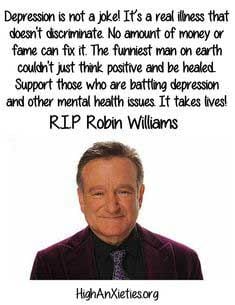
I could go on and on but I am sure you recognize a pattern here. Different names, similar side effects. Taking an anti-depressant that may cause me to have suicidal thoughts just does not make any sense. I was introduced to Zoloft after I was hospitalized for slitting my wrists.
We are all different, what works for one person may work for another. The YouTube videos have given an unbiased opinion. I just picked the ones with the largest audience.
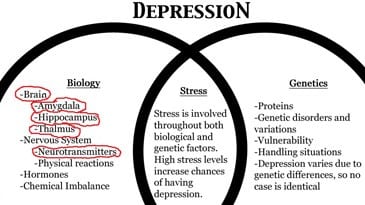
Please if you are having a hard time and may have thoughts of suicide, DO NOT KEEP IT TO YOURSELF!!! There is nothing to be guilty of or feel like you are a weak person. These are related to the way your brain responds to certain circumstances. It is not your fault. Depression, anxiety, and mental disorders are chemical imbalances that happen in your brain that you have no control over. That is why it is called a disease.
ALWAYS SEE A MEDICAL PROFESSIONAL.
Yes, I am not a fan of these drugs but sometimes they are necessary. I just want you to be aware of what you are taking and the side effects. Do your own research, even contact me through my website and I will listen and not judge.
Also please consider:
Most importantly do not keep it locked inside you. Talk. I will be here for you.
Thank you for reading.
Michael.
Comments are welcome.
Depression and anxiety are something that I have been battling with all my life. I live in the city my whole life. Originally from Bangkok, Thailand and not to NYC, U.S.A and things do get rough but I love and hate the city at the same time.
I used to take Zoloft everyday and I get so sleepy and sluggish from it. so my therapist told me to take it later in the afternoon. Thankfully I have left my job and do not get anxiety attack or panic attack as much any more so my dosage has gone down and I do not even need it any more.
Talk to the therapist is the best way to go but of course prevention is the best approach. Try meditating, work out, or hang out or talk with good friends can help a lot without the need of medications.
Hi Nuttanee,
Thank you for your comments. Seems you have lived a high paced life as far as the cities you have lived in are living in now. I was on Zoloft for over 15 years along with other medications. I have been off these medications for over three years now and feel a lot better. Please do follow what your Doctor recommends. Also consider herbal alternatives, yoga and even mediation. I am not a fan of been medicated.
Wishing you all the best,
Michael
Hi, Michael,
The number of people suffering from depression and anxiety disorders is shocking! Psychiatric disorders are real and need to be addressed. It’s sad to see that even children and adolescents are affected by it.
I’ve never suffered any of those disorders and hope it remains that way. I’m no doctor, but I always prefer natural or alternative remedies. The fewer meds, the better. However, if the doctor prescribes them, then it’s better to follow his directions.
Thanks for writing this up and making us aware of this problem. I will share it with my friends.
Hi Enrique,
Thank you for your comments. The statics are tragic and the rate of suicides are on the rise. I too strongly believe in the alternative remedies such as yoga, meditation and the herbal way.
Best wishes,
Michael
I have been challenged by mental health issues all my adult life and probably as a child as well – my mother discribed me as “highly strung”. I suffered from insomnia around age 10 and I remember her giving me valium, she was a nurse but I still don’t know how she actually got it. I have never found that drugs have been very useful except in the very short term and most drugs these days are designed for very long term use, with some not even being useful for a couple of months. I do take the occasional sleeping pill when I am very anxious and can’t stop my mind racing because I find sleep deprivation has a big impact on my ability to manage my mental health.
Hi Deb,
Thank you for your comments and sharing a bit about your experiences. I do believe in alternate ways in treating anxiety and depression, however in some cases they are necessary. I was on antidepressants and anti anxiety medications for over fifteen years. I am not sure if these medications were the best idea. I have been off these medications going on three years now, and feel a whole lot better. I practice yoga, meditation and follow herbal remedies. No side effects.
I do have a post on insomnia and ways you may find helpful when you feel too anxious to get to sleep. There are some videos on this post you may also find helpful.
Wishing you all the best,
Michael
Many anxiety sufferers do not have enough medication to calm them down for one or two months because they may have deep anxiety or be exposed to long-term stressful circumstances. In addition, many people with anxiety also have depression, so their tranquilizers can be harmful. In all cases, other therapeutic options should be sought. Fortunately, they exist and are called antidepressants.
Hi Kozakiv,
Thank you for your comments. I do believe anxiety and depression go hand in hand. Medicating the condition may be necessary along with the therapeutic options. Antidepressants carry a lot of side effects which was the main reason for my article. Perhaps you missed that.
Best wishes,
Michael
Hey, I enjoy a lot while reading your guide on Antidepressant Anxiety medication. I found it very helpful for everyone like me. I also know that anxiety is an emotion characterized by feelings of tension, worried thoughts, and accompanied by physical symptoms such as sweating, trembling, voice changes, or increased blood pressure. It may also be called nervousness. We have to do yoga or meditation to keep away from Anxiety.
Hi Deepanshi,
Thank you for your comments. You are absolutely right, yoga and even meditation are great ways to decrease anxiety.
Best wishes,
Michael